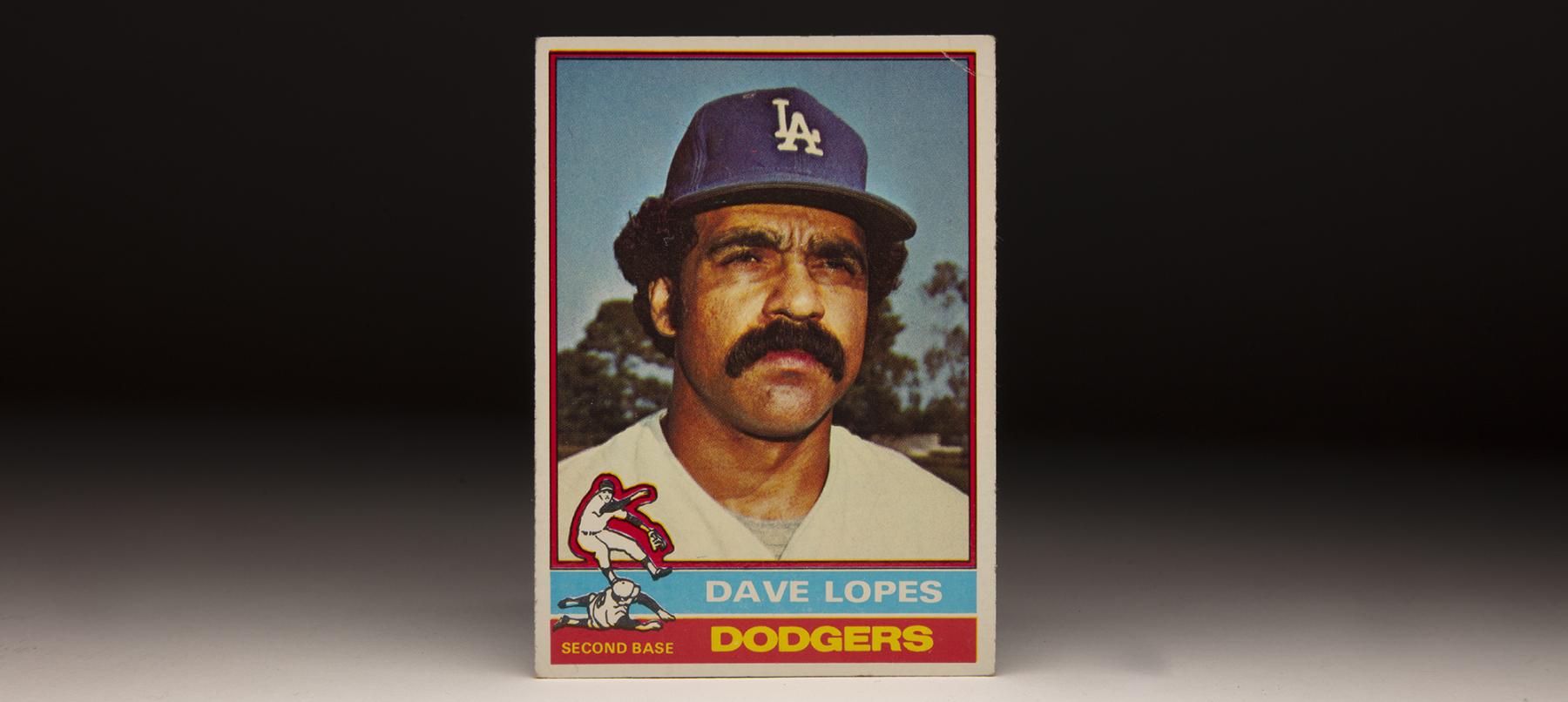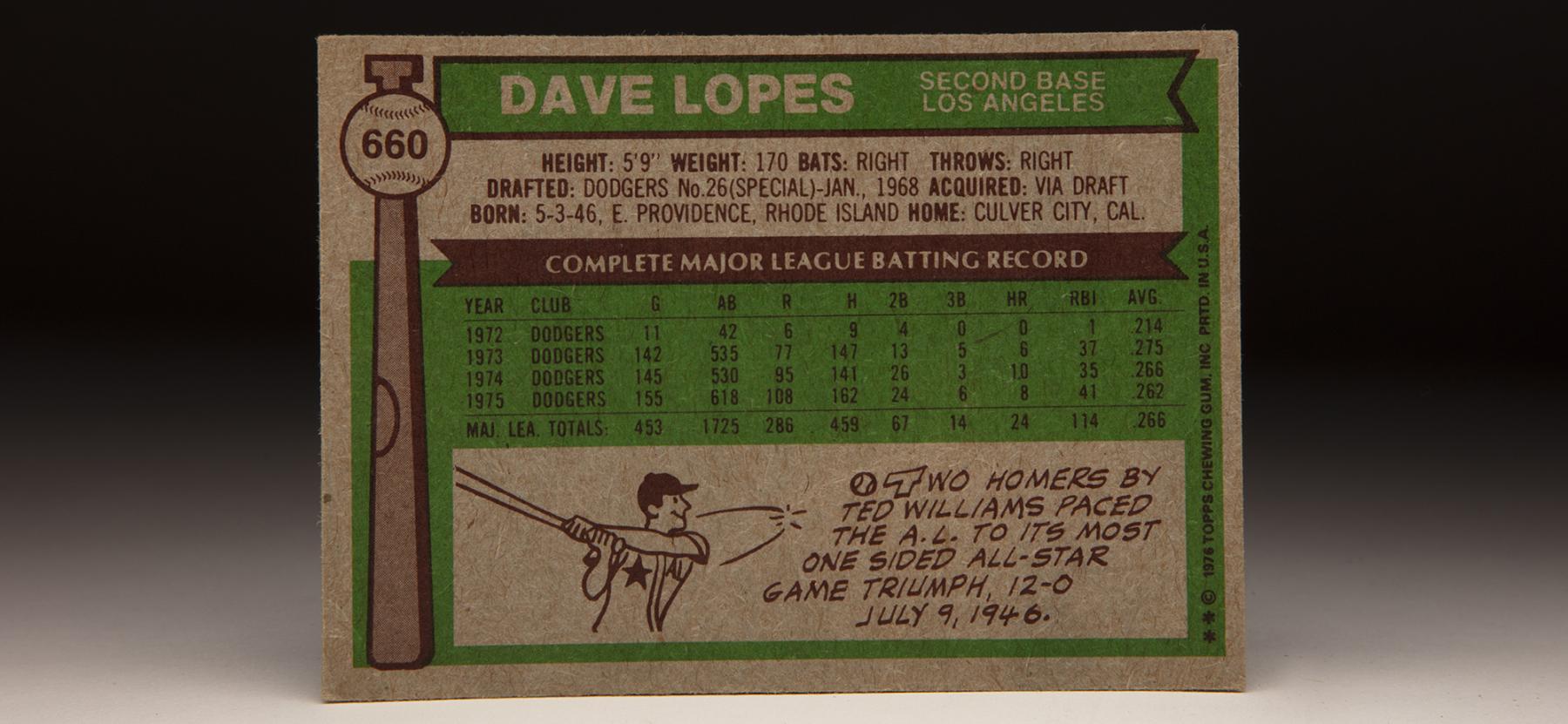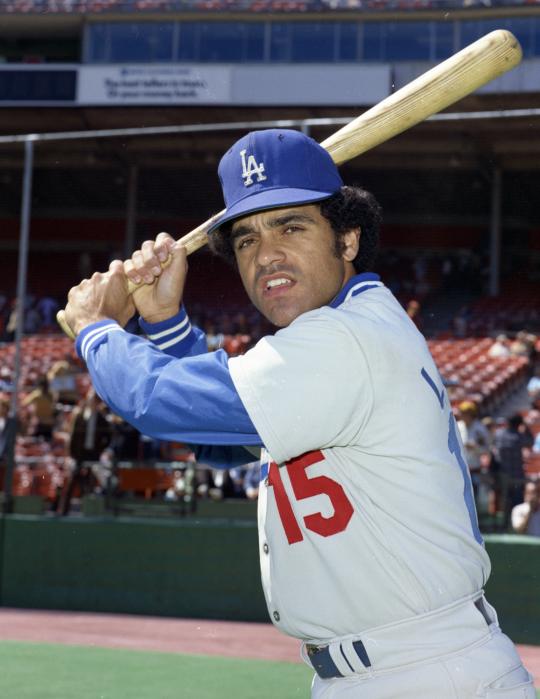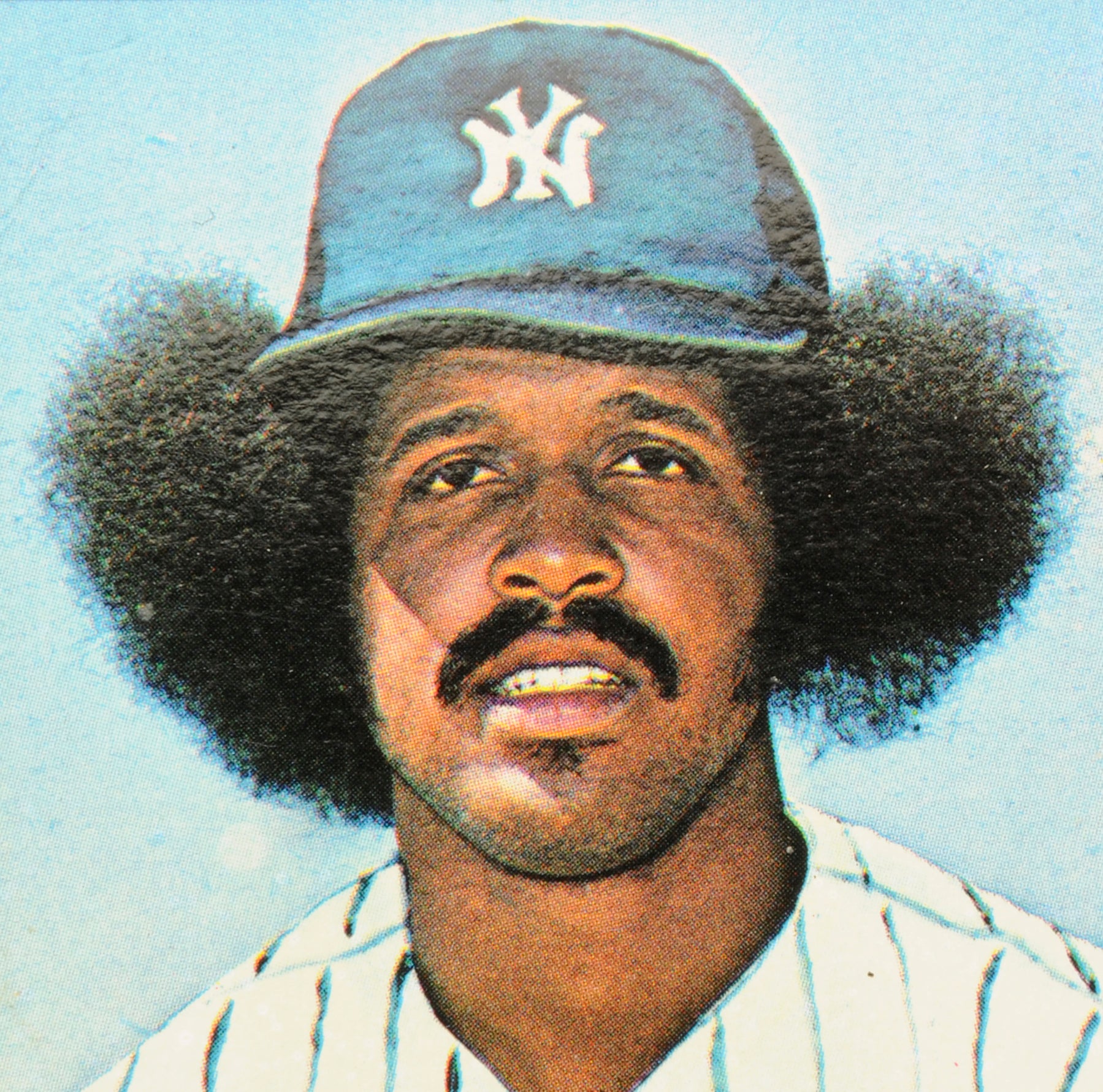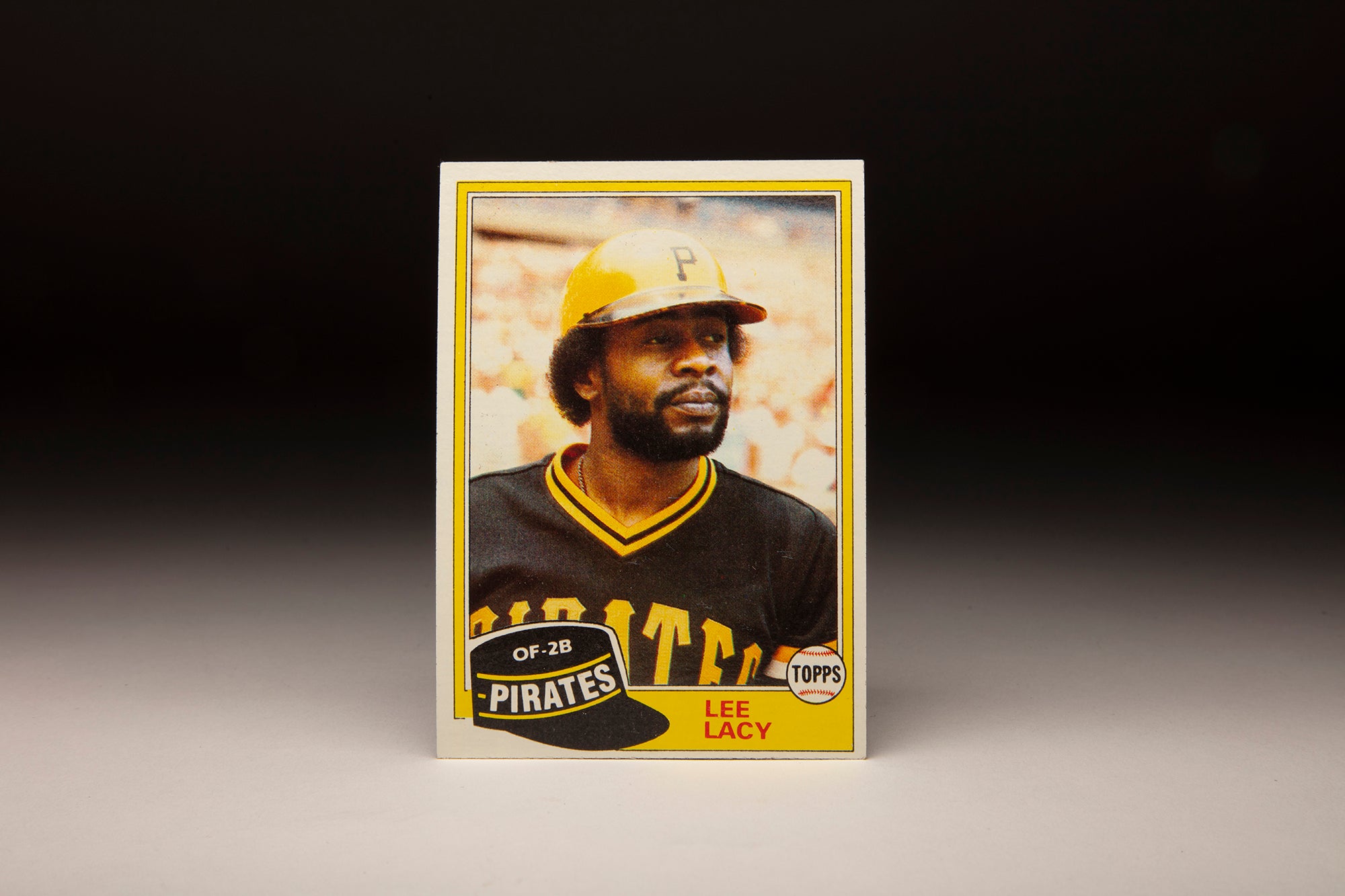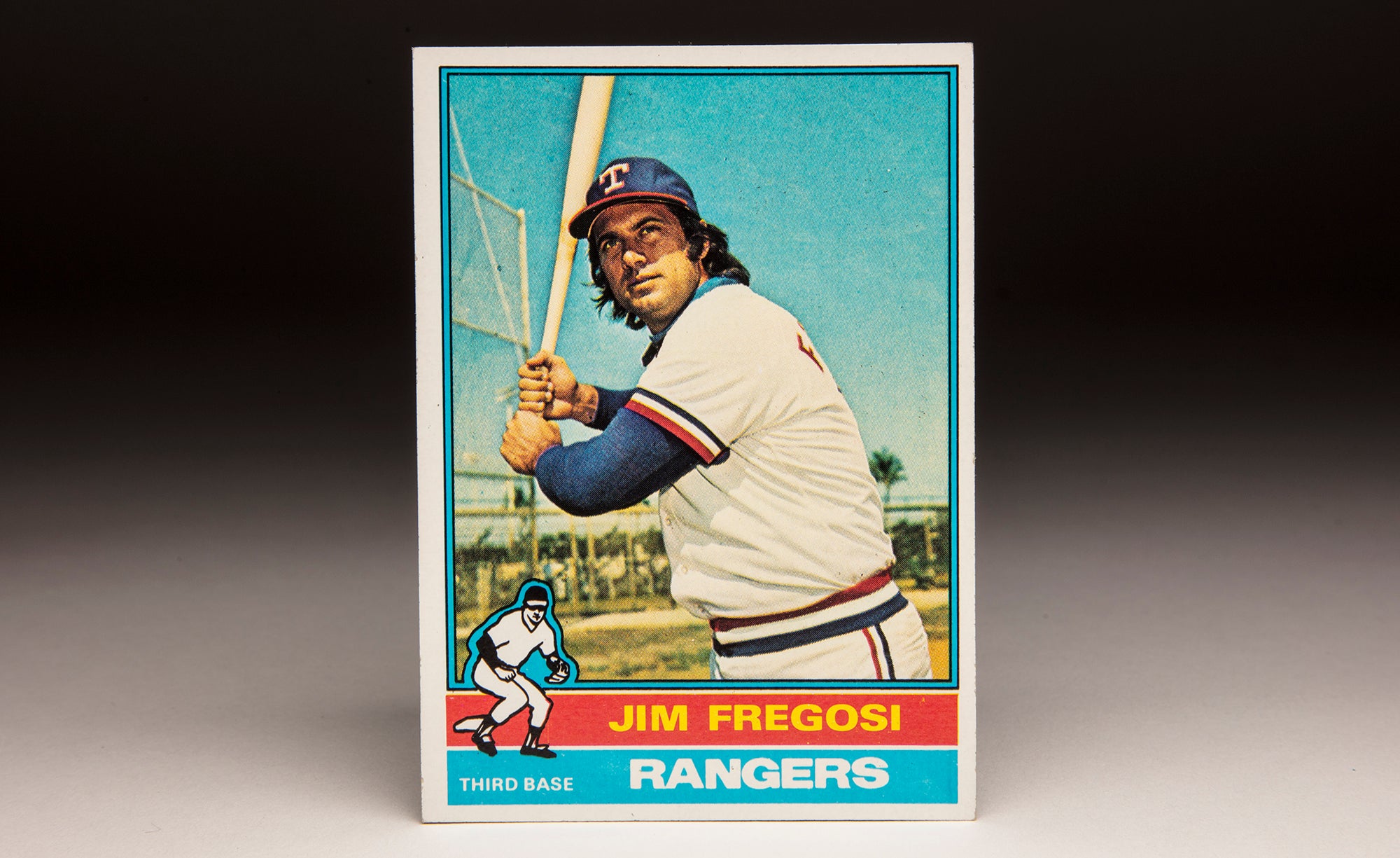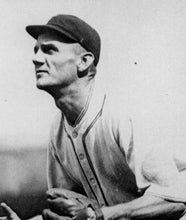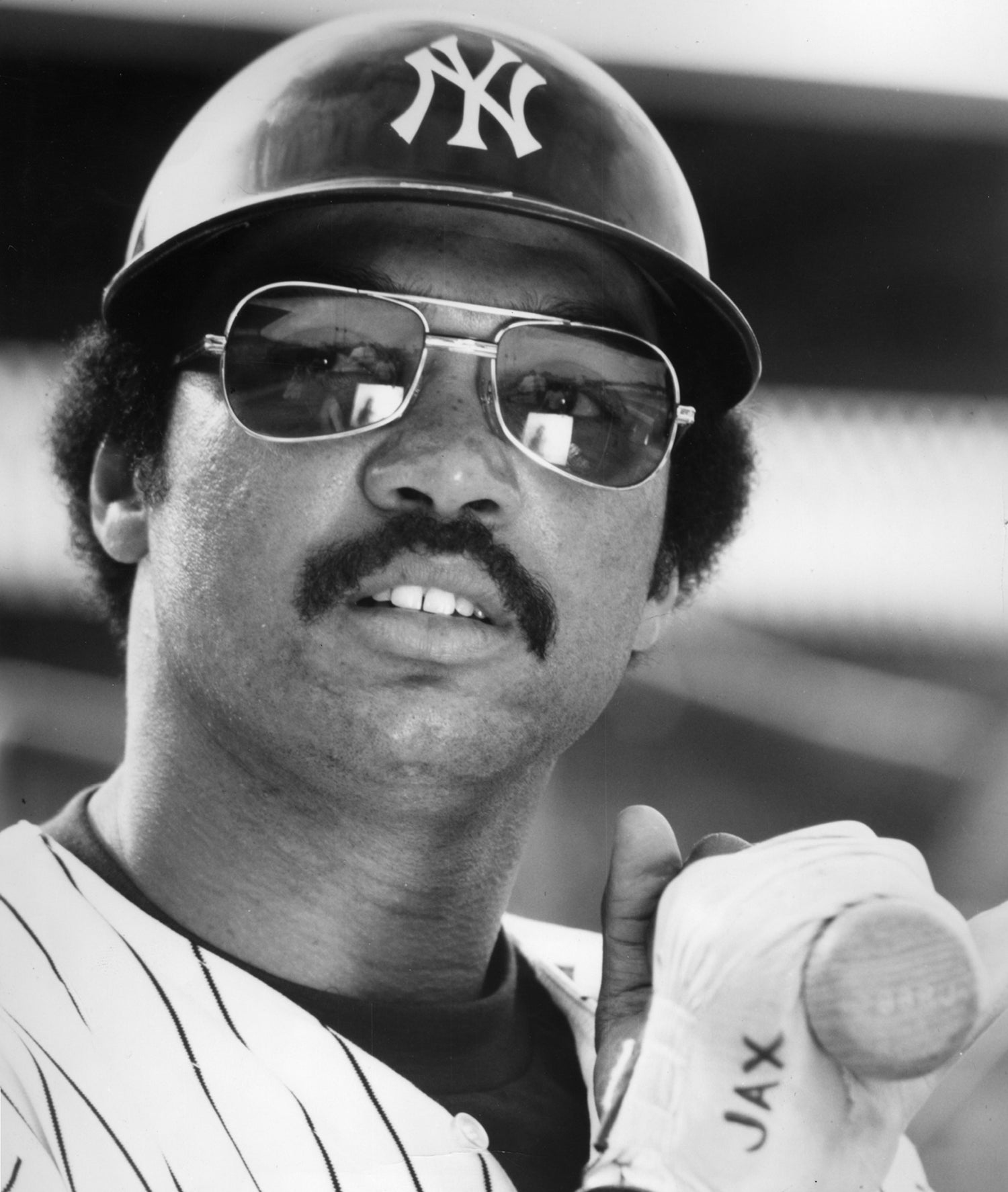- Home
- Our Stories
- #CardCorner: 1976 Topps Davey Lopes
#CardCorner: 1976 Topps Davey Lopes
He was the ultimate baseball late bloomer, attending Topeka’s Washburn University on a basketball scholarship before following his heart onto the diamond and into a Dodgers’ minor league system flush with talent.
But Davey Lopes never stopped believing he would make it to the big leagues. And despite needing until his age-28 season to become a MLB regular, Lopes carved out a 16-year playing career that made him one of his era’s most versatile players.
“The first day I ran out onto the field in Dodger Stadium was such a great high,” Lopes said. “I had achieved something I had dreamed of my whole life.”
Born May 3, 1945, in East Providence, R.I., Lopes’ stated goal as a youth – as early has his days in parochial school – was to become a big leaguer. But at 5-foot-9, he attracted little attention from scouts and battled poverty throughout his youth.
One of 10 children, Lopes had no memory of his father, who passed away when Lopes was a child.
“I had one glove until I got into high school,” Lopes told the Los Angeles Times.
Earning a chance to play college hoops in Kansas, Lopes also played baseball for the Ichabods – and remained at the school even when a tornado in June of 1966 destroyed many of the building on the Washburn University campus. He was selected by the Giants in the eighth round of the June 1967 MLB Draft, but opted to return to school to finish his education degree.
The Dodgers then took Lopes in the second round of the January 1968 draft and quickly converted him from an outfielder to a second baseman, sending him to Class A Daytona Beach of the Florida State League that summer. But Lopes did not attend Spring Training in either 1968 or 1969 as he worked to finish his degree.
“I had more of a passion for basketball than I did for baseball back then,” Lopes told the Journal Times in Racine, Wis., of his high school days. “Growing up in New England, that was the game you played. But being of diminutive size, I knew I wasn’t going anywhere with basketball.”
Lopes hit .247 in 82 games in 1968, stealing 26 bases and scoring 39 runs. He returned to Daytona Beach in 1969, where he raised his average to .280 while recording 32 steals.
Then in 1970, the Dodgers – knowing the clock was ticking for the now 25-year-old Lopes – sent their second baseman of the future to Triple-A Spokane, where he helped an Indians team managed by Tommy Lasorda win 93 games. Powered by an impressive roster that featured Bill Buckner, Steve Garvey, Tom Paciorek, Bill Russell and Pacific Coast League MVP Bobby Valentine, Spokane won the PCL title.
Lopes hit .262 over 100 games, but many observers felt he would always be overshadowed by this group of future Dodgers.
“In everybody’s lifetime, there comes a time when an opportunity will arise,” Lasorda said. “If you’re prepared – and this is what I told Davey – when preparation meets opportunity, that will spell success.”
Back with Spokane in 1971, Lopes hit .306, scored 78 runs and stole 27 bases in 94 games. Then in 1972, the Dodgers’ Triple-A team moved to Albuquerque – and Lopes went with it, hitting .317 with 48 steals and 94 runs scored before earning a promotion to the big leagues in September.
“I didn’t have the pressure on me to produce that some of the (Dodgers prospects) had,” Lopes said. “That worked in my favor. So did the fact that being overshadowed made me even more determined to do well, to show that I deserved a chance.”
Lopes made the big league roster out of Spring Training in 1973, but prospect Lee Lacy – who battered Grapefruit League pitching that year – won the job as Los Angeles’ Opening Day second baseman. By the end of April, however, Lacy was hitting just .215 – and Dodgers manager Walter Alston put Lopes in the starting lineup.
By mid-June, Lopes was hitting better than .340 and had locked up the job.
“I really believe I can hit .300,” Lopes told the L.A. Times. “I say that because of my speed, because I’ve been around .300 for so long now and because I see good pitches from guys who aren’t anxious to walk me.”
Lopes ended the season hitting .275 with 77 runs scored and 36 stolen bases in 142 games. He finished in sixth place in the National League MVP voting, tied with (among others) teammate Ron Cey, who won the job as the Dodgers third baseman.
Bill Russell had established himself as the Dodgers shortstop in 1972, and in 1974 Steve Garvey took over at first base. The quartet of Lopes, Cey, Russell and Garvey would remain in place through the 1981 season – becoming one of the most recognizable infields of all time.
In 1974, Garvey won the NL MVP Award, driving home Lopes 20 times as the Dodgers captured the NL pennant. Lopes hit .266 with 95 runs scored, 66 walks and 59 stolen bases and chipped in four steals during the postseason. Los Angeles, however, fell to Oakland in the World Series.
For the next seven years, the Dodgers finished first or second in the NL West in every year but one – coming in third in 1979. Lopes was the spark that ignited Los Angeles’ offense, leading the NL in steals in both 1975 (77 steals) and 1976 (63 steals) twice.
In 1975, Lopes stole 38 consecutive bases, breaking Max Carey’s mark of 31 set in 1922 along the way.
“Naturally, I’m pleased to have broken it,” Lopes told the L.A. Times. “You have to feel happy when you’ve done something that no one has ever done before.”
“Experience is of tremendous importance in base running. The more I play, the better I’ll become.”
Lopes’ work on the base paths in 1975 broke a string of four straight NL stolen base titles by Lou Brock, who set the all-time single-season record (since broken) with 118 the year before. Then in 1976, Lopes pulled a muscle in his side during the final week of Spring Training and missed the first 21 games of the season. But even with the slow start and nagging injuries throughout the year, Lopes scored 72 runs over 117 games.
Lopes and the Dodgers returned to the World Series in both 1977 and ’78, defeating the Phillies in the NLCS in both years but losing to the Yankees each time in the Fall Classic. Lopes’ 1978 season was his finest to date, as he hit .278 with career-bests in home runs (17) and RBI (58) while scoring 93 runs and stealing 45 bases while being caught just four times.
Then in the World Series, Lopes hit two homers in Game 1 – just two days after his friend and Dodgers’ coach Jim Gilliam died after suffering a brain hemorrhage the month before. Lopes served as a pallbearer at Gilliam’s funeral.
“Going to his funeral and then playing in a World Series game will be the toughest thing I have ever done,” Lopes told the Detroit Free Press. “Each time I’ve went to the plate lately, I’ve remembered what he told me, how he instructed me to hit.”
Lopes hit .308 with seven RBI and seven runs scored, but for the second straight year the Yankees won the World Series in six games.
Dodgers coach Jim Gilliam served as a mentor for Davey Lopes, who dedicated his performance in the 1978 World Series to Gilliam. Lopes hit two home runs in Game 1 of the '78 Fall Classic – two days after Gilliam passed away. (Doug McWilliams/National Baseball Hall of Fame and Museum)
Now the Dodgers’ captain, Lopes was named to his first All-Star Game in 1978 and also won his first Gold Glove Award. Then in 1979, the 34-year-old Lopes hit 28 home runs, recorded 73 RBI, stole 44 bases, scored 109 runs and drew 97 walks. But the Dodgers missed the playoffs for the first time since 1976.
Lopes began to show signs of slowing down in 1980, hitting .251 with a career-low 23 steals as Los Angeles was eliminated from the postseason by the Astros in a one-game playoff on the day after the regular season ended.
Then in 1981, Lopes sprained his ankle on a steal attempt against the Mets on May 17, shelving him for all but one game until play resumed after the strike on Aug. 10. Lopes was hitting .171 at the time of his injury, but pushed his average back to .206 by the end of the season.
The Dodgers advanced through the National League playoffs by beating the Astros and Expos in the maximum five games of each series, with Lopes stealing a total of six bases in the 10 games. Then in the World Series, Lopes hit two home runs, drove in four runs and scored six times as the Dodgers beat the Yankees for their elusive Fall Classic title.
In the pivotal Game 4, the Dodgers trailed 4-0 and 6-3 before Jay Johnstone’s home run cut the deficit to 6-5 in the bottom of the sixth. Following Johnstone’s homer, Lopes reached base on an error charged to Yankees right fielder Reggie Jackson, hustling into second base on the play. After stealing third, Lopes scored on Bill Russell’s single to tie the game – a contest Los Angeles went on to win 8-7 to tie the series at two games apiece.
Los Angeles would win the championship in six games.
Lopes committed six errors in the series, which generated plenty of headlines. But despite the miscues, veteran columnist Jim Murray was among many observers who thought Lopes should have been named the series MVP.
The World Series, however, would be Lopes swan song in Los Angeles. With top prospect Steve Sax coming off an MVP season in the Texas League for Double-A San Antonio in 1981, the Dodgers broke up their veteran infield – sending Lopes to the Athletics in exchange for minor leaguer Lance Hudson on Feb. 8, 1982.
“I wanted to go to a team where I was wanted,” Lopes – who allowed the trade despite being a 10-and-5 player who could have blocked it – told United Press International.
With three years remaining on his contract, Lopes – who was soon to turn 37 – appeared to have plenty left in the tank. He hit .242 with 28 steals in 1982, then played in 147 games in 1983, hitting .277 with 17 homers, 67 RBI and 22 steals. But the A’s traded him to the Cubs on Aug. 31, 1984, as Chicago chased the pennant, and Lopes made just one plate appearance in the NLCS as the Cubs lost to the Padres in five games.
Lopes bounced back with a fine season off the bench in 1985, stealing 47 bases in 99 games for the Cubs while hitting .284. He split the 1986 season between Chicago and Houston, then appeared in 47 games with the Astros in 1987 before ending his career.
Lopes soon transitioned into his second career, coaching for the Orioles and Padres during the 1990s before being hired as the Brewers manager prior to the 2000 season. He skippered the Brewers for two full seasons before being dismissed early in the 2002 campaign, then returned to the coaching ranks with the Padres, Nationals, Phillies and Dodgers through the 2017 season.
In 16 big league seasons as a player, Lopes hit .263 with 1,023 runs scored, 1,671 hits, 155 home runs and 557 steals in 671 attempts. His success rate of 83.0 percent is the third-best of all-time among players with at least 400 steals, trailing only Tim Raines and Willie Wilson.
“A lot of people are now saying they knew I’d make it, that I wouldn’t end up on the streets,” Lopes told the L.A. Times as he was establishing himself at the big league level during the 1973 season. “That’s funny. I can count on the fingers of one hand the number of people who really believed that.”
Craig Muder is the director of communications for the National Baseball Hall of Fame and Museum

